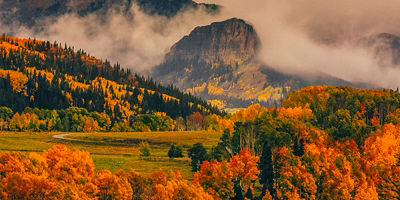
Creating photographs is one of the best ways to get outside and experience wildlife. And on another level, says Josh Metten, a wildlife photographer, naturalist and guide with Jackson Hole EcoTour Adventures, it also “creates value for wild animals and wild places.” Metten certainly knows the dual benefits of wildlife photography. He’s been guiding in Grand Teton and Yellowstone national parks for the past 10 years after graduating from Colorado State University, where he studied Natural Resource Management. Wildlife inspiration started long before that during childhood forays in Rocky Mountain National Park, where family visits in the fall, with golden aspens and elk bugling, created particularly lasting memories. Now Metten (@joshmettenphoto) regularly captures standout moments with grizzlies, wolves, elk, bison, raptors, eagles, and other amazing wildlife worth sharing. Here are his tips on taking great photos, and doing so responsibly.
The Best Places for Pictures of Wildlife
More than likely, says Metten, there are natural areas near you. “There’s a national wildlife refuge within an hour of every metro area in the country,” he adds, pointing out that while national forests are fantastic, natural areas within cities—where you’re taking photos of common species, like backyard birds on feeders—also work well for getting great wildlife photos.
Notably high-quality locations (out West) include Grand Teton and Yellowstone national parks, both well-known for wildlife photography. “And Rocky Mountain National Park is great seasonally, for elk in particular.” He also points to Brooks Falls in Katmai National Park for shooting photos of grizzlies catching salmon, and Nebraska’s North Platte River to shoot the sandhill crane migration. “You can rent and sit in a blind and take pictures of several hundred thousand sandhill cranes in the spring,” he says. “That’s something on my bucket list.”
Metten explains how knowing where the males of a certain species “lek,” or congregate in a display to get the females’ attention, can yield photo opportunities. The Wyoming Game and Fish Dept. has mapped sage grouse lek sites. “With some lek sites, you can get close enough for photography,” he says. “But others are better experienced with binoculars and spotting scopes from far away to avoid disturbing the birds.”





















